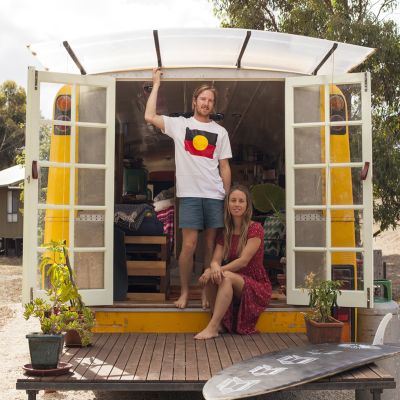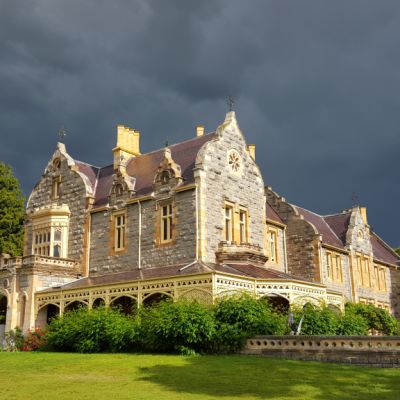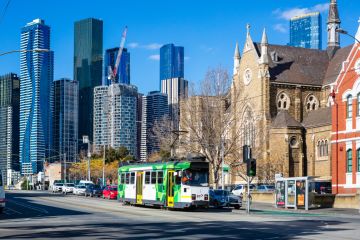The Australian couple restoring an 18th century French chateau
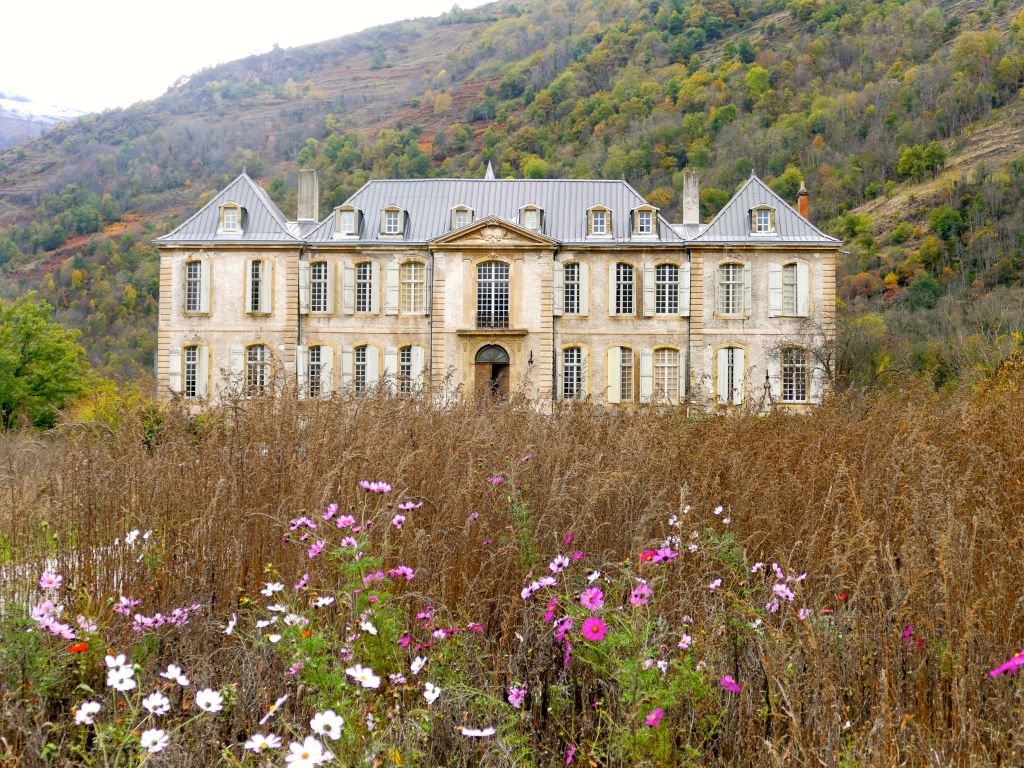
When Perth couple Karina and Craig Waters hired a car and headed on a scenic drive towards the Pyrenees, they weren’t seriously expecting to buy an 18th century, 96-room chateau.
After all, what business would an Australian taxation accountant and a neurological surgeon have in pouring their blood, sweat and savings into a French historical monument with the same protection status as the Eiffel Tower?
In fact, one of the couple’s old friends, a Frenchwoman, had expressly forbid them from buying any of the following: a historic monument, a chateau or a restoration project.
Listen to episode two of Somewhere Else to hear our interview with Karina:
So when, after two years of bureaucratic wrangling, they snapped up the crumbling Chateau de Gudanes in 2013, in the small village of Chateau-Verdun, Ms Waters laughs that it was a sizeable conversational bomb to drop.
However the Waters, whose kids had finished university, were looking for a new adventure.
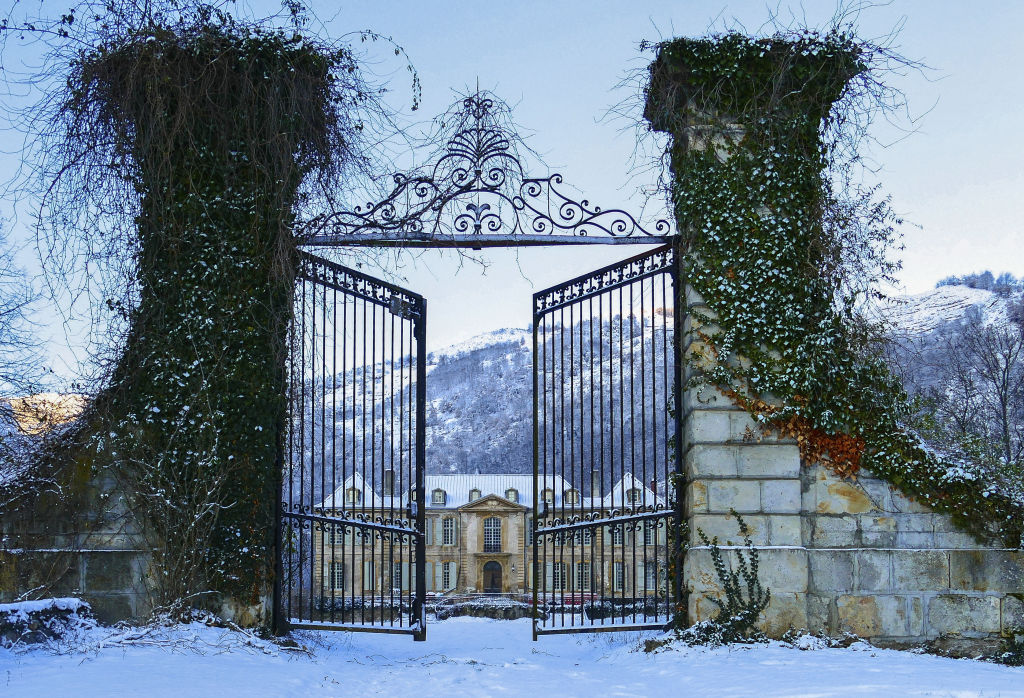
“It wasn’t so much about escaping life over here – it was a journey about going to live life,” says Ms Waters. “You get to a certain point in your life where you think ‘you’re a long time dead’.”
There was also the fact that their new address was in arguably one of the world’s most stunning locations, surrounded by 360-degree views of mountains, behind a beautiful iron gate and with wildflowers galore.
“There wasn’t much there not to love,” says Ms Waters. “The whole thing’s a fairytale, that’s what you feel like you’re in.”
Inside, it was another story.

The chateau was built in the 18th century on behalf of Louis Gaspard de Sales, the Marquis de Gudanes who was also known as the “King of the Pyrenees”.
Centuries later, in the 1960s and ’70s, it was used for children’s holiday camps, before being purchased by a syndicate who planned to transform the remains of the site into a luxury hotel.
However, after the government classified it as a historic monument in the mid-1990s, ongoing disputes saw it fall into disrepair.
By the time the Waters arrived from Perth, large sections of the roof had collapsed, and much of the interior was rubble. However, seeing how much love had been poured into the original building inspired them to take on the mammoth restoration project.
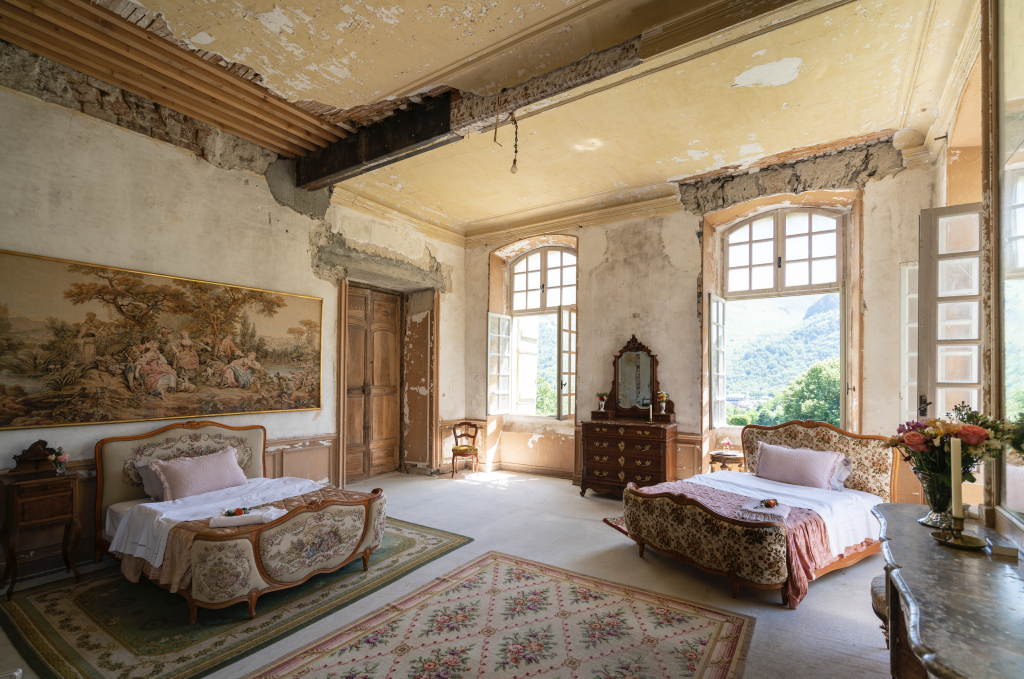
“Despite all the damage we could already see that there was so much beauty there,” says Ms Waters.
After they finally secured the title, Ms Waters quit her job to focus on the project full-time. Her husband, still earning an all-important salary in Perth, will visit for two months this year.
“We don’t try to be anything we’re not, but I think the actual beauty of the chateau captures everyone’s imagination,” says Ms Waters.
TV programs including Grand Designs have also come calling, but have so far been turned away.
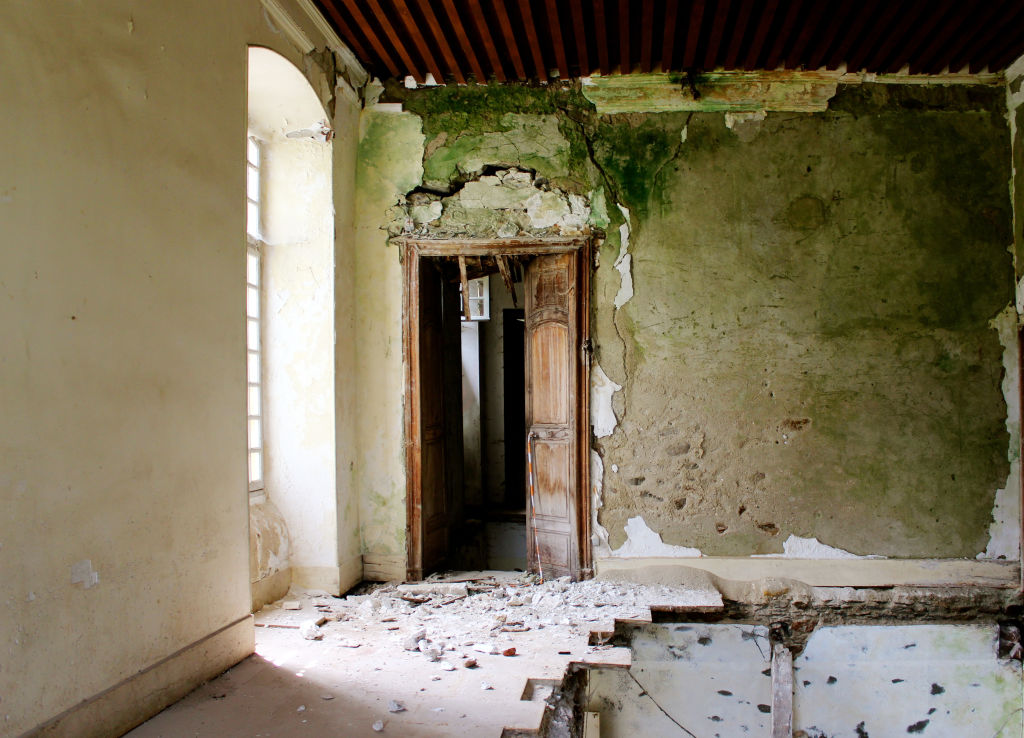
A team of five local workers are currently bringing the chateau back to life, and while a project manager was initially employed, Ms Waters took the reins when she realised they’d “end up having someone else’s dream”.
“I’ve had to upskill in so many areas I never thought I’d be involved in,” says the former tax accountant, who laments that her scratchy French isn’t improving more quickly.
She’s also a labourer on site, and laid every original 18th century tile in the chateau’s 150 square metre entrance hall.
Ms Waters declines to reveal the chateau’s purchase price, but says the idea of snapping up such a property for a bargain is a fallacy. The restoration, which she happily estimates will take a lifetime, is going to cost the couple a fortune.
“There’s no point in really even doing up a budget. Everything just gets blown out of the budget,” says Ms Waters.
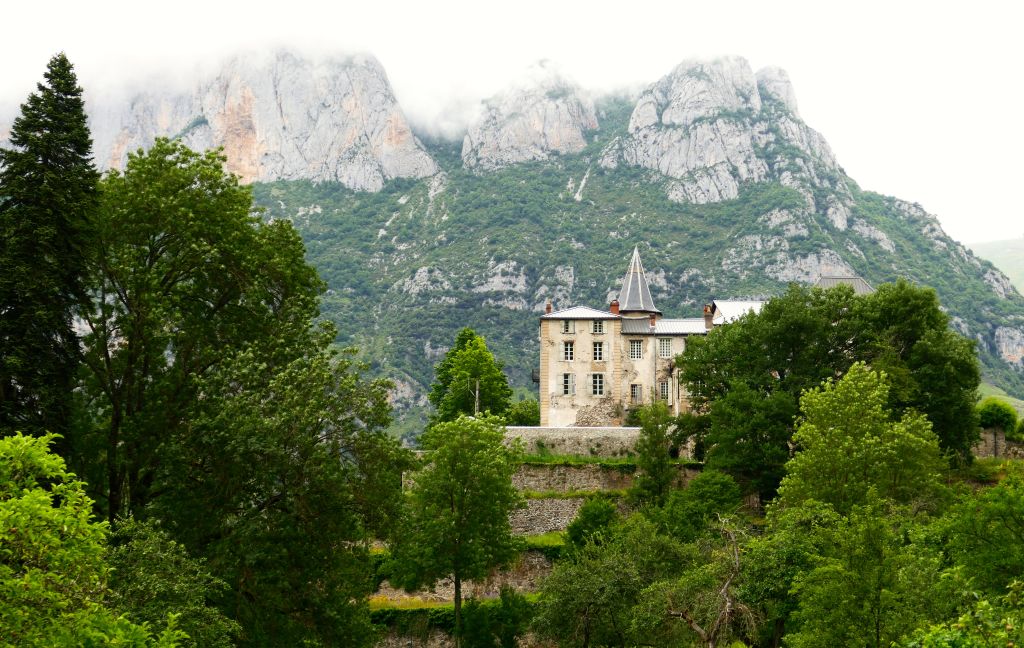
To help fund the project, the owners last year began holding paid restoration workshops. This year they’re also opening up the chateau for tours that include cooking, history and hunting for bric-a-brac, and will continue selling advent calendars and Christmas cards.
While it might be a grand-looking chateau (apart from the crumbling bits), living there poses challenges. At one point, Ms Waters was sleeping outside in a four-man tent.
Now she’s inside, but with limited power.
“It’s just like taking yourself and putting yourself into another world, living in a building that was purposefully built in another century. We have electricity in about three rooms, but we don’t have it in our bedrooms, we have to take a candle,” she says.
Then, there’s a bitterly cold winter to contend with. “When I was there in December, I opened up the front door and it’s like stepping into a cool room. The cold air just hits you.
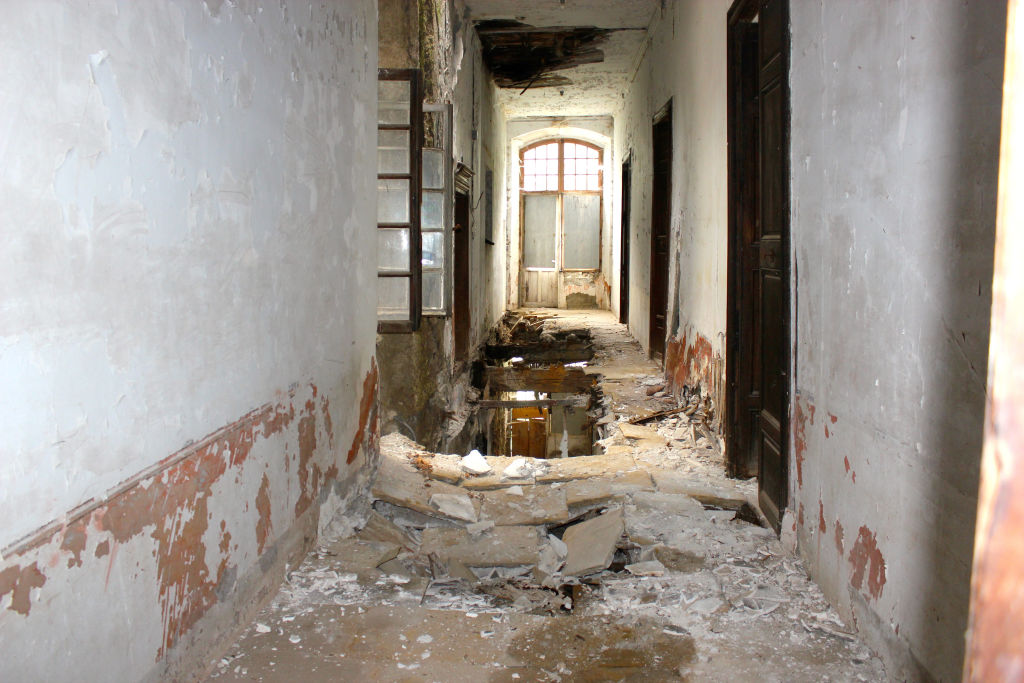
“We can get it up to 12 degrees if you have it [the fires] turned on all day, and in-between you just run,” she laughs. “As soon as you feel cold you have to get active, but I did buy electric blankets this year, with a long extension cord.”
“But we’ve just had to toughen up and accept what our decision has been in doing this,” says Ms Waters. “You don’t take on a historical monument and turn into a flaky person. It’s a moral responsibility.”
Meantime, they’ll keep chipping away and revealing long-held mysteries, such as a tunnel rumoured to go from beneath the chateau to the local village. Between labouring, project managing and being surprised by the odd donkey or horse that wanders in, Ms Waters is also putting together a coffee table book about the restoration.
She says the chateau exists with its own beauty and story.
“It’s almost like we’re living in someone else’s dream,” she says. “We don’t delude ourselves that it’s something we’ve created.”
To hear the full interview head to Domain’s new podcast, Somewhere Else on Apple podcasts and Google podcasts.
We recommend
We thought you might like
States
Capital Cities
Capital Cities - Rentals
Popular Areas
Allhomes
More
